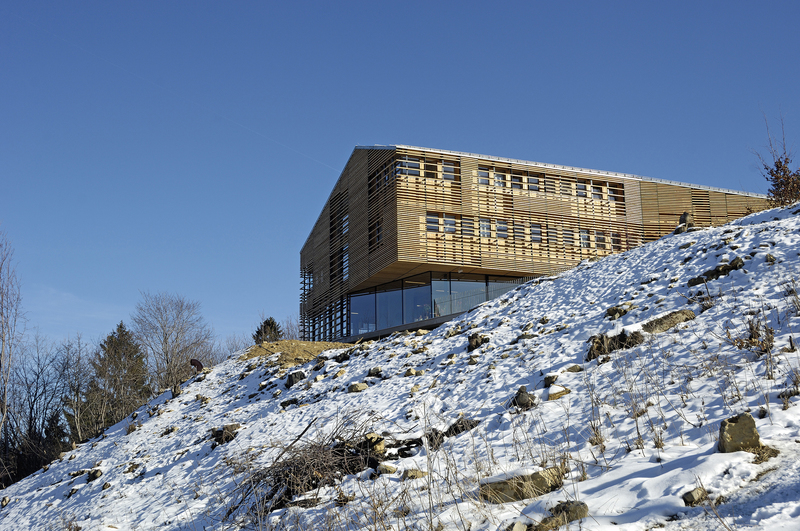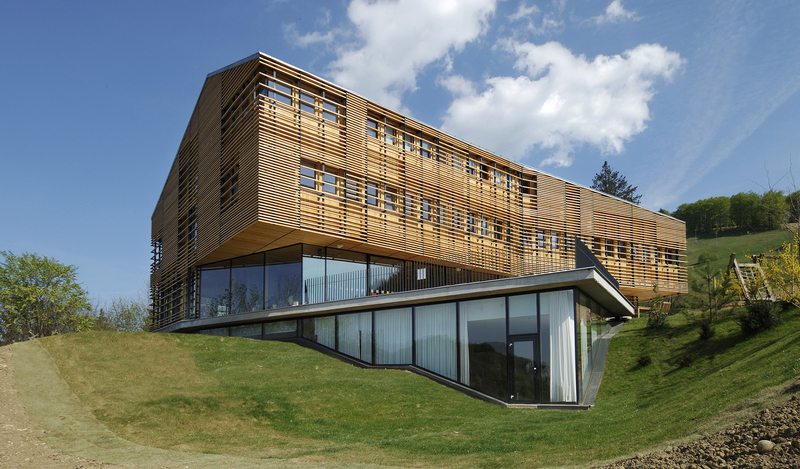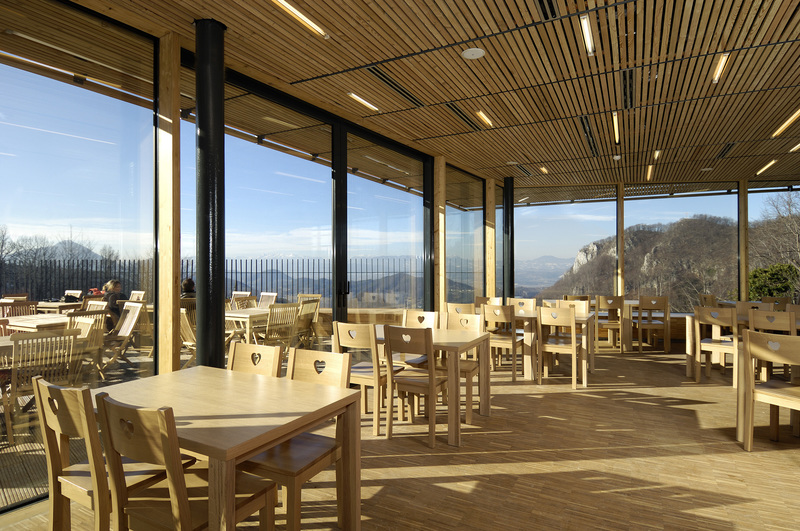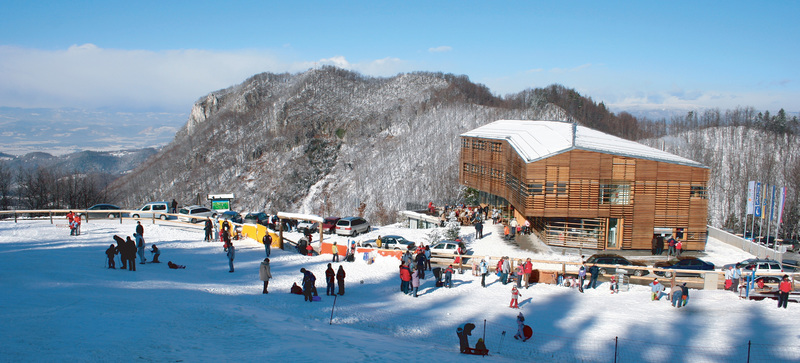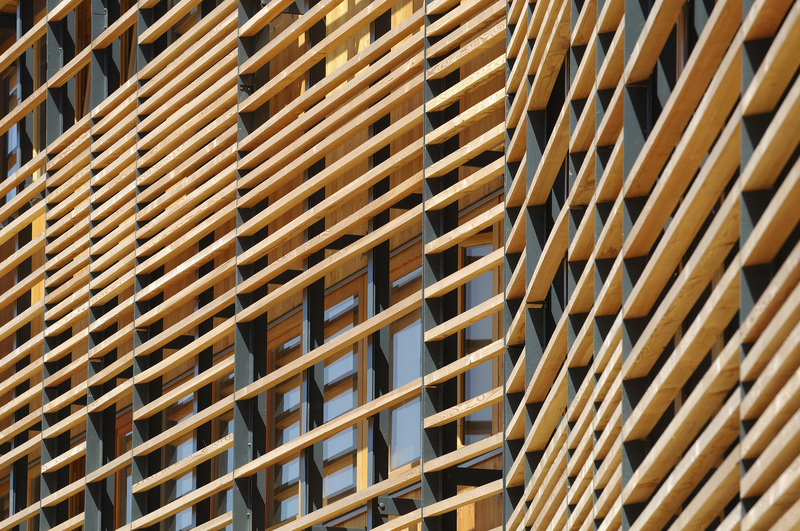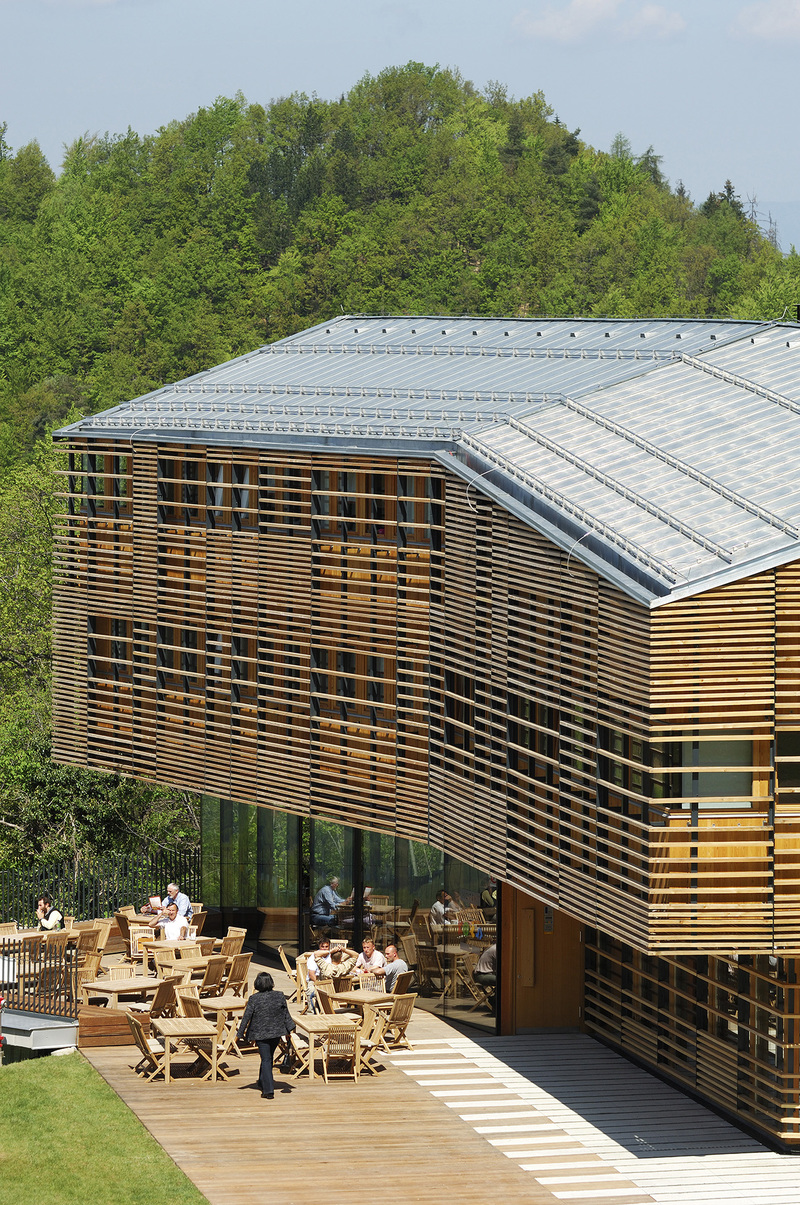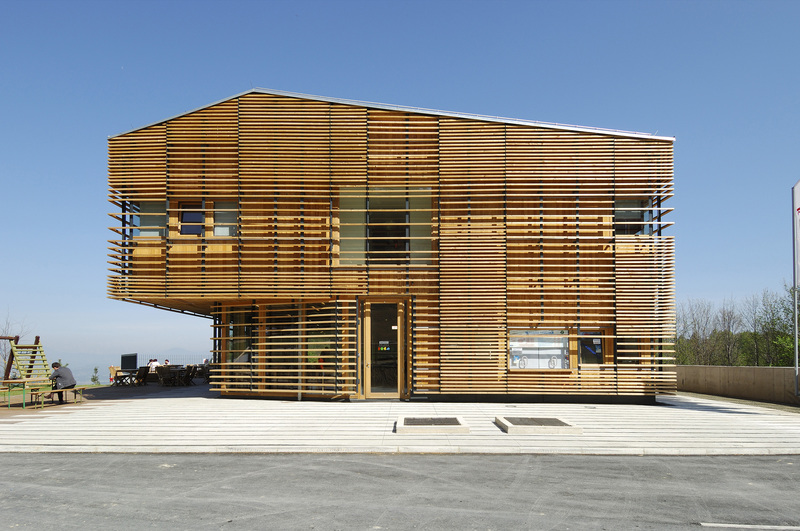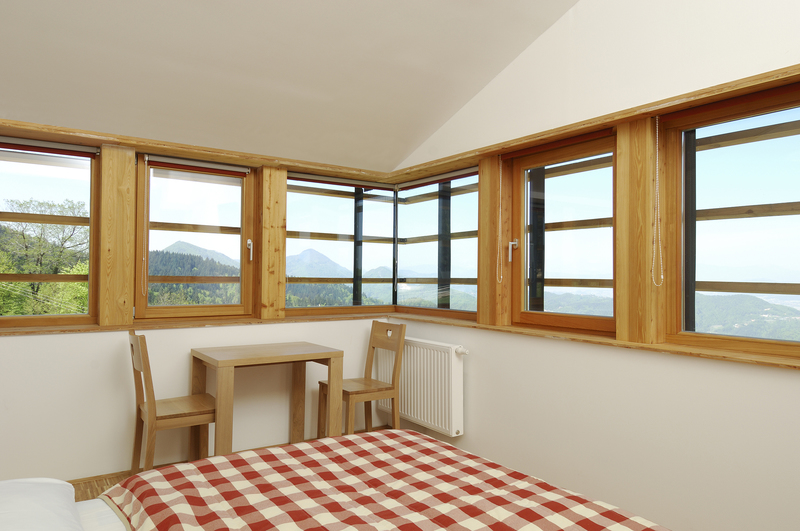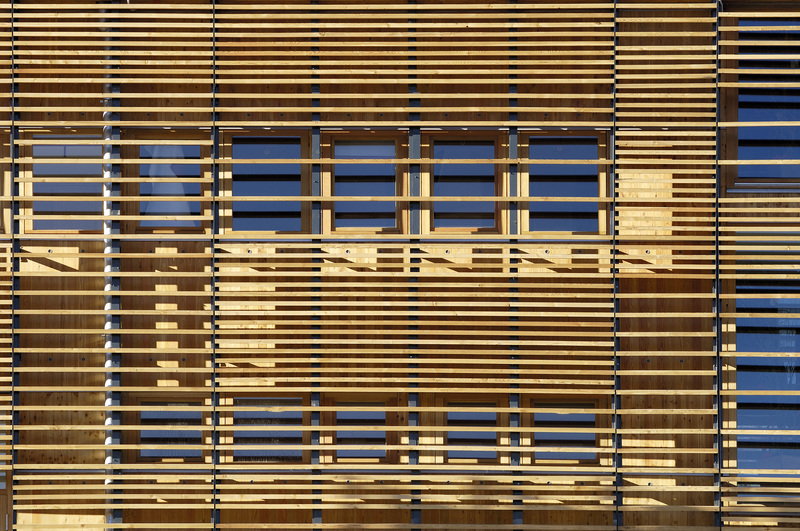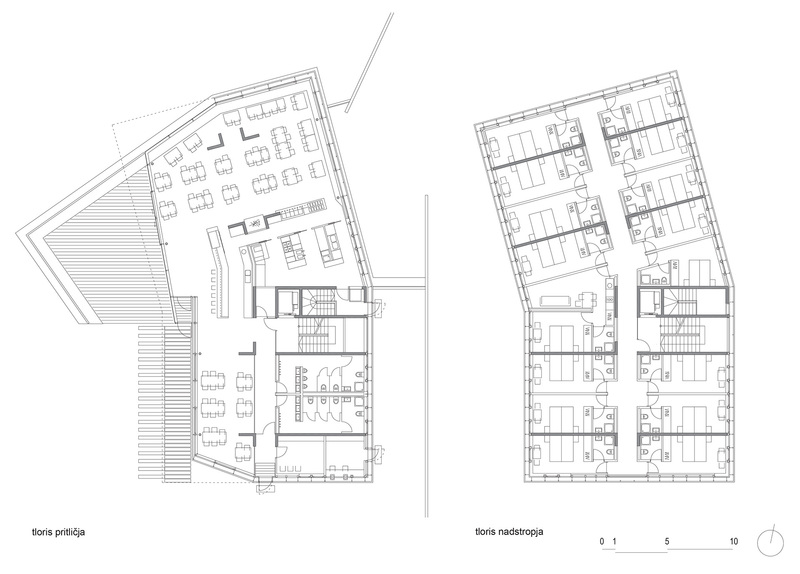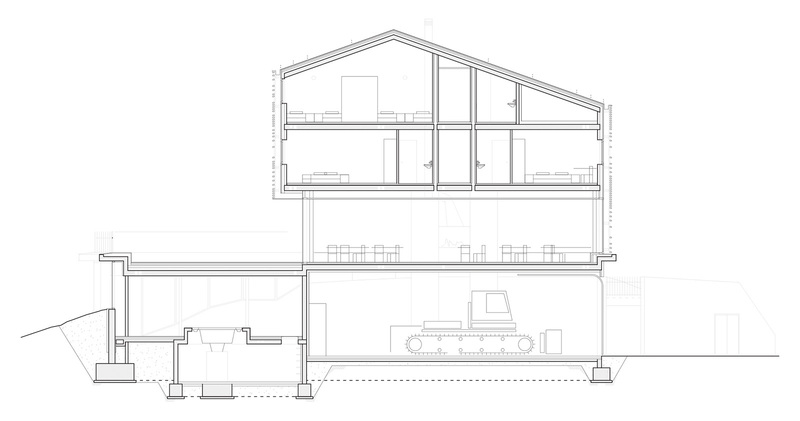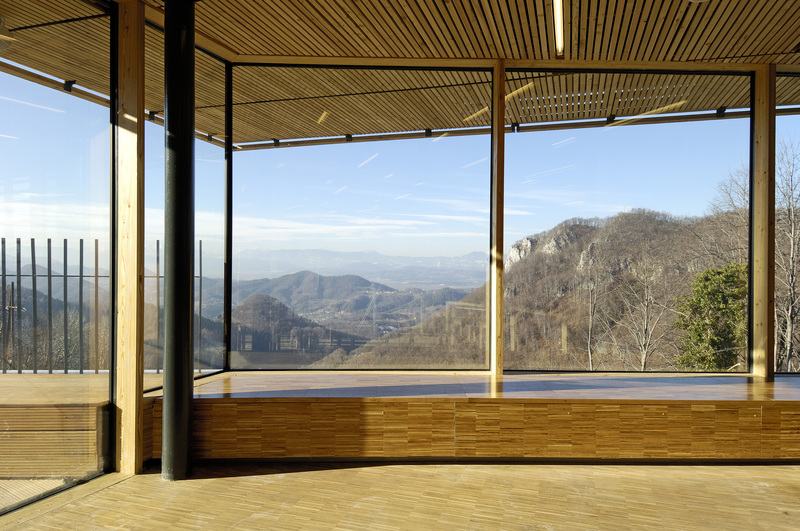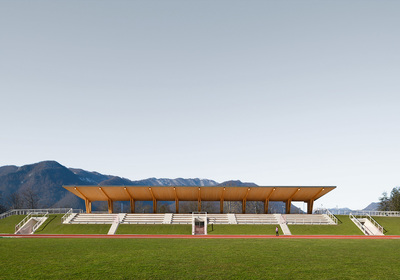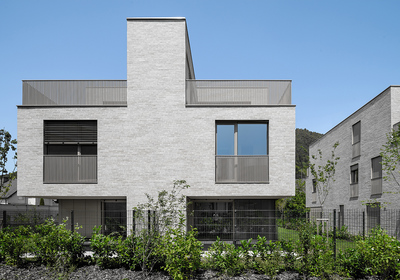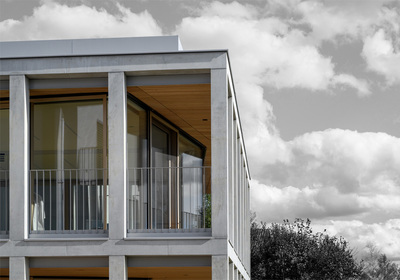Location
Celje
Realisation
2006-2007
Project
2005-2006
Competition
2004 (1st prize)
Client
Municipality of Celje
Authors
Lena Krušec, Tomaž Krušec
Coauthor
Vid Kurinčič
Project team
Matej Nolda, Miha Volk, Miha Žargi
Photography
Miran Kambič
Alpine hotel Celjska koča
The building of Alpine hotel "Celjska koča" is situated on an exposed natural plateau at the foot of the ski run bearing the same name and replaces the mountain cabin which became obsolete and required demolishing. The former cabin was situated in the direct vicinity of the new hotel.
The panoramic view toward the valley and the rocky hilltop of Grmada represents the main attraction of the given location, thus making this feature key to the design of the new building.
The described panorama serves as the guiding element both for the interior design as well as the exterior of the architectural volume. On its reverse side, the building carries through the geometry of the existing slope, while the valley side sees the building "cut inside" in the direction of the Grmada hilltop.
The views towards the surrounding natural landscape combined with the architectural features of the building thus equally contribute to creating the ambience of all of the interiors.
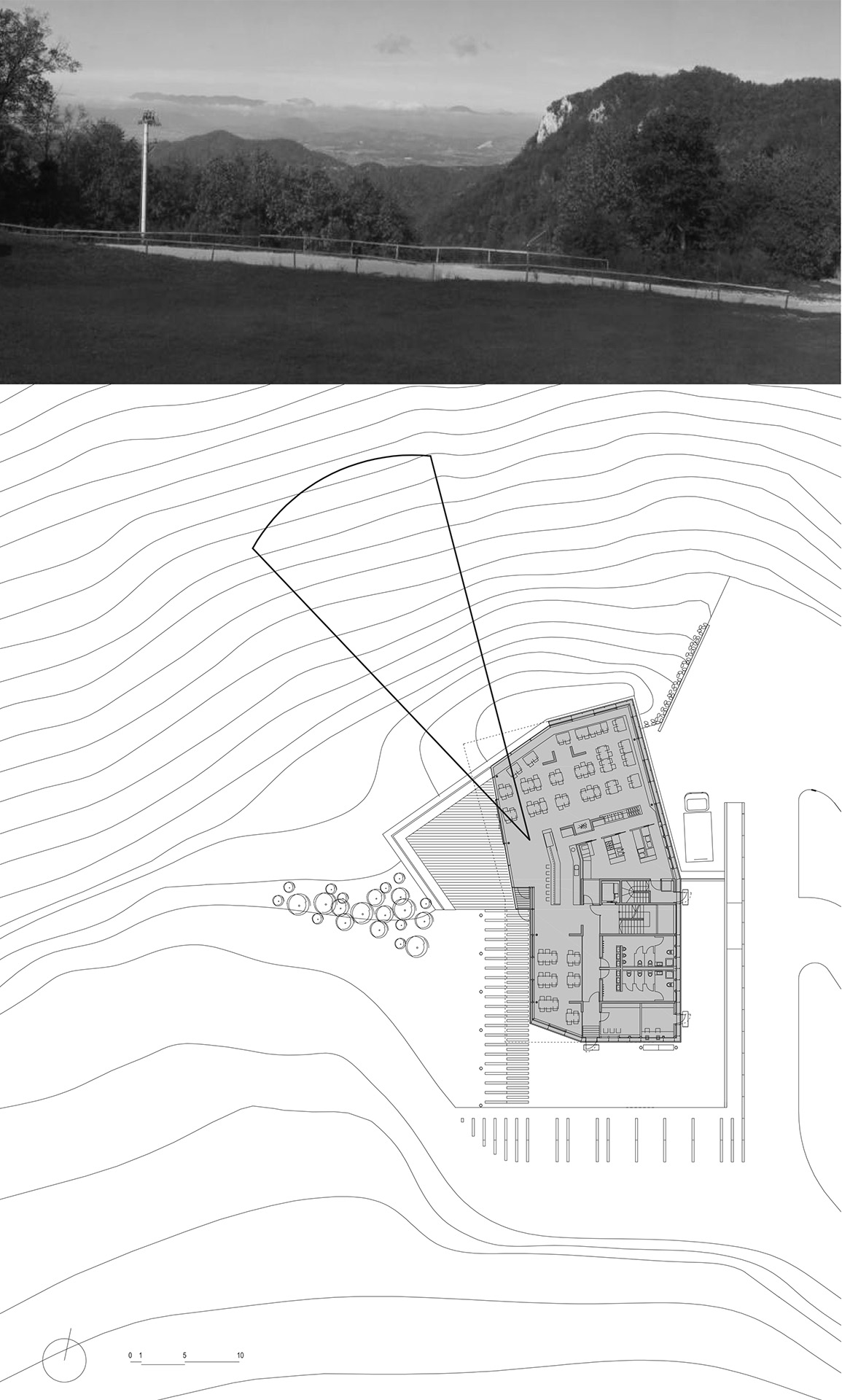
The location of the new Celjska koča carries a double meaning: on the one hand, the image of the cabin has been mentally ingrained in the minds of the Celje inhabitants as one of their favourite trips for more than a century, while on the other hand, the impression of the location reflects in the beauty of an unscathed natural surrounding and views towards the valley.
The might and recognition of the volume from the valley side is therefore a logical consequence of the substance and significance which the cabin acquired through the decades. Essentially, it is the characteristic of a powerful physical presence and recognition that is traditionally present in Alpine architecture, particularly in the architecture of Alpine hotels (e.g. the Kulmhotel chain in the Swiss Alps). The project of designing a new Celjska koča building therefore emphasises the described duality of the given location.
Upon arrival from the valley, it physically dominates the surrounding landscape and forms a unique dominating feature in the landscape, while the feature completely gives way to the magnificent panoramic view of the Celje Basin when looking from the ski slope.
Particular attention was devoted to the tectonic design of the building. The carrying structure is limited to eight corner concrete columns which run along the middle of the building just like a spinal column and thereby support all the inter-floor armed concrete plates.
The façade is completely prefabricated and constructed from wood. Even though the wooden façade is the result of the most modern construction guidelines, the structural design of the façade epitomizes the simplest principles of construction applied in building Slovene barns and hayracks. The plain Slovene builder has known for a long time that unsaturated wood is most sensitive to extreme weather conditions. That is why the homes and outhouses of common folk were always constructed using a double layer. The inner massive façade which often also represented the structural core of the building was "dressed" in an additional, transparent layer which was made out of a system of horizontal wooden laths. This allowed structural parts of the buildings to remain in the shade during the summer and provided physical protection from the cold and the snow in wintertime. The layer of air between both façade layers provided continuous airing for all wooden elements and thereby extended the durability of the wood. Furthermore, different distances between the horizontal laths also enable the creation of a typical atmosphere of the hotel interiors. The exterior façade laths become a tool with which the architect is able to design individual interior ambiences. Such dense laths prevent views of unattractive natural landscape features, while the more infrequent design directs visitors’ views towards important dominating features in the landscape.
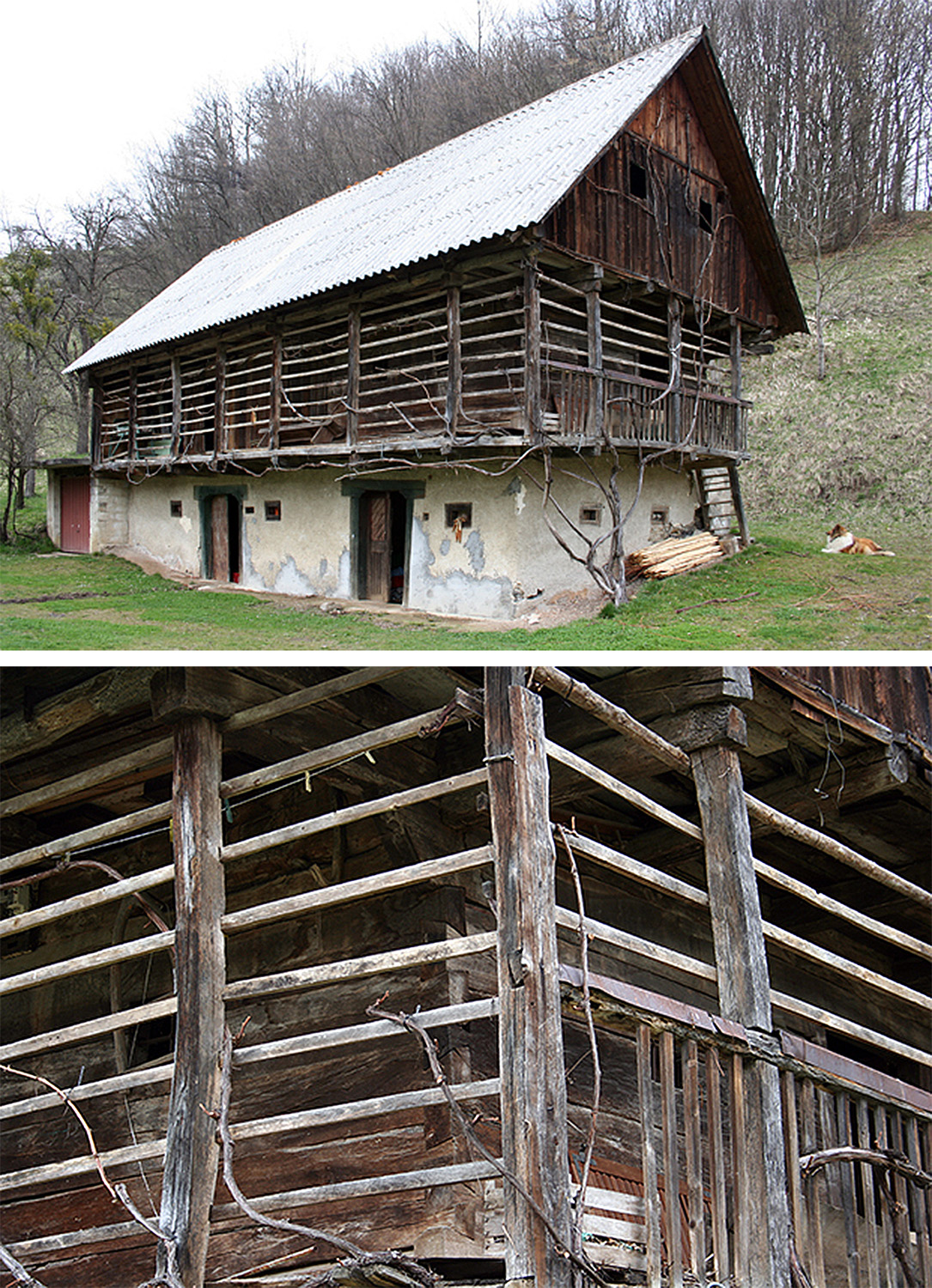
The new Celjska koča has been integrated into the surrounding environment by respecting all existing elements thereof, sensibly linking them into a unified landscape using modern spatial interventions.

